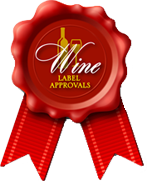

In this article, I explain how to use social media to successfully promote your winery or Vineyard, and what social media web sites are beneficial for promoting your wine business. I also address what are necessary the steps in setting up social media accounts, and what is difference between each popular social media outlet, and what are the drawbacks.
Social media is often a buzz word that is gaining momentum with wine professionals. First, let me explain: “What exactly is Social Media?” Social Media refers to the popular platforms such as Facebook and Twitter; Social Media involves posting pictures, videos, and text on these bulletin board platforms, but with the engagement and interaction from users, such as “subscribers” or “followers,” by comments or sharing content via personal news feeds.
I would like to start with the most popular social media web site online: Facebook. In order to use Facebook to market your vineyard or wine product, you need to setup a “Business Page,” not a user account. Once you setup a “Business Page,” you specify whether or not you want a to setup a page just for your wine business or product. In a nutshell, I like to think of a wine Facebook “Business Page” as an updated version of a Yellow Pages Listing for the 21st Century.
For the Ed Hardy Wines Facebook page, customers post raving reviews of Ed Hardy Sangria. This Facebook page serves as customer service for portal. If a customer is looking for a particular product, he or she will likely contact us through Facebook rather than traditional means: telephone or e-mail. I have notice that my Facebook pages are primarily used for customer service. At my company, I use Facebook with my colleagues to assist customer on finding our products by State, or giving them additional information about related products.
I would declare Twitter as the second runner up for social media platforms. Facebook is primarily a visual platform whereas Twitter is a social bulletin board platform that consists of small text messages called “Tweets.” What the benefits of using twitter for my wine business?
From years of experience, I have learned that Twitter is more of an open platform for sharing content, rather Facebook can be more restrictive in some cases for sharing posts. Examples of this would be the hashtage, “#”, a special mark used in posts to link related information, such as #spanishwines or #californiawines. By using the hashtags, you are sending your message or post out into Twittervese. This special mark is used to categorize your posts for users, so your message are linked together and grouped with related posts.
I usually use hashtags that are related to the post, and that include are generic description, but too generic due to competition. Examples of this would be the hash tags #wine and using a more specific hashtag such as #bordeauxwines is more favorable.
In order to obtain “Followers” on Twitter, I follow users who are also involved in the wine industry. It is easy to gain followers this way unlike that Facebook pushes their targeted advertising platform for business accounts in to garner more “Likes”. I remembers years ago it was easier to simply add people as a business user account, but doing this method would result in your account being banned by Facebook administrators, and it is not recommended. If you continue masquerading your business account as a user account, I recommend switching your account over to a Facebook business page or product page.
The third popular visual social media web site is Pinterest. Each social media site has their place, Facebook is more of interactive platform whereas Twitter consists of simple text messages. Pinterest is a social media site that allows users to categorize pictures on digital bulletin boards. On Pinterest, users usually have a theme for their bulletin boards. I use Pinterest to organize wine related bulletin boards and pins. I made bulletin boards for the wines that have received high marks from The Wine Enthusiast and The Wine Spectator. For the social aspect of Pinterest, users will “re-pin” what posts that interest, and then their reposts will be seen in their individual news feeds.
Tumblr is a new upcoming social media site that is a microblogging web site. This web site reminds me of a revamped GeoCities from the 1990s, a community of themed web pages. Tumblr is a hybrid of Twitter and WordPress blogging platform. Each user has an individual blog with a user newsfeed. For wine marketing, I like to repost my Facebook and Twitter post to advertise my wine products.
Instagram is subsidiary of Facebook. Instagram is used to take photo with your cell phone and allows you to share your photos with your friends on your newsfeed. I think Instagram can be used to take pictures at wine tasting events. The key to using Instagram is posting plenty of pictures of your products.
The final social media web site is Google Plus. I would describe Google Plus as Facebook as Google’s version of Facebook. For your wine business, I would recommend setting up a Google business page for search engine optimization, and filling in the content areas with pictures. Please include hours of operation for your vineyard or wine import business. Please make sure to think your Google Plus page with your web site.
What are the benefits and drawback of using Social Media for your wine business?
In summary, there are a lot of resources for advertising your wine via social media. I think constantly updating and providing valued content on these web sites is paramount. Their is a high level of commitment in providing fresh and engaging content. In order to successfully use social media, a targeted ad campaign should be used in conjunction. This would is drawback to get your social media sites off the ground because targeted ad campaign costs depending on how much you are willing to spend on your wine product.
